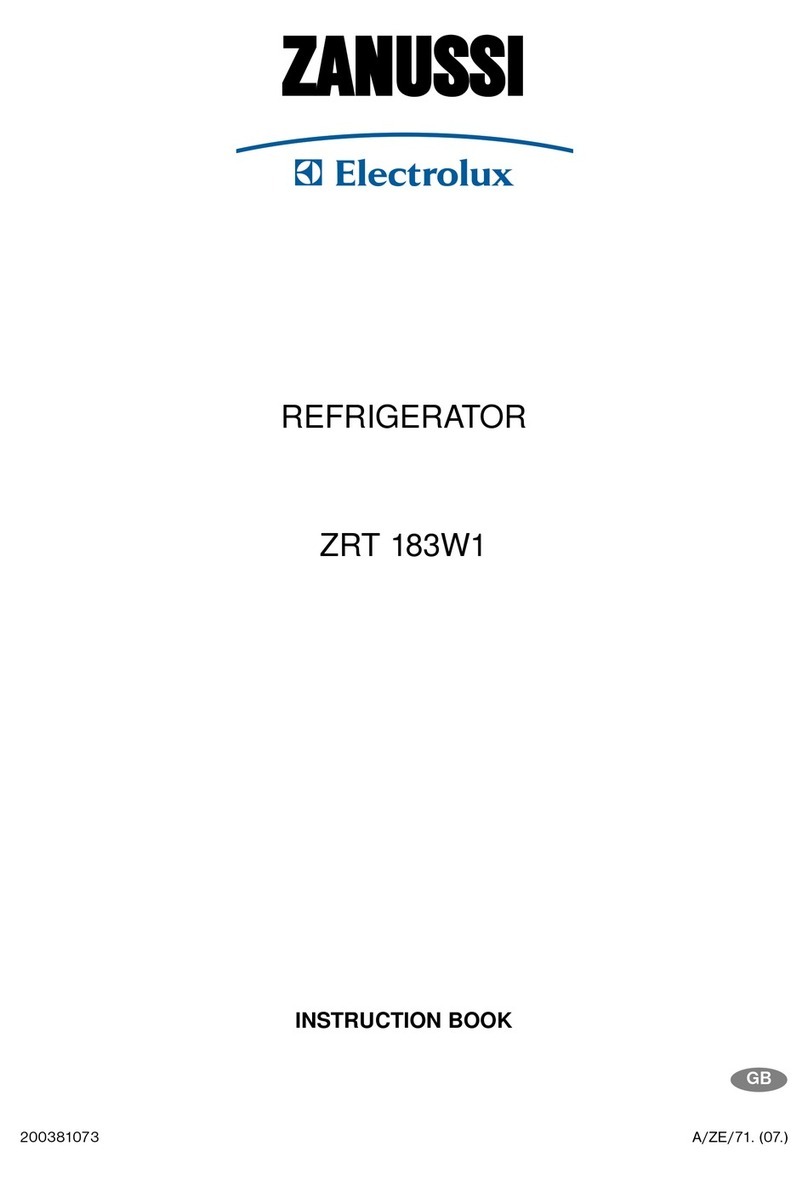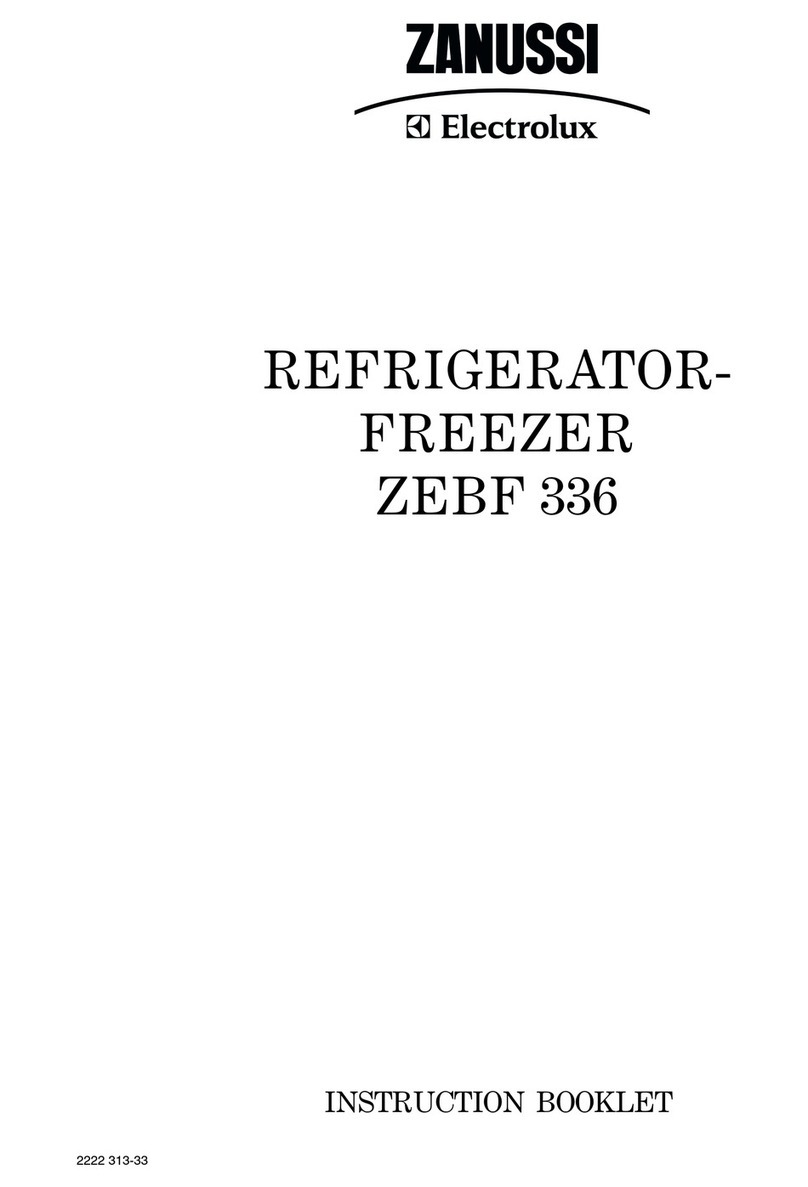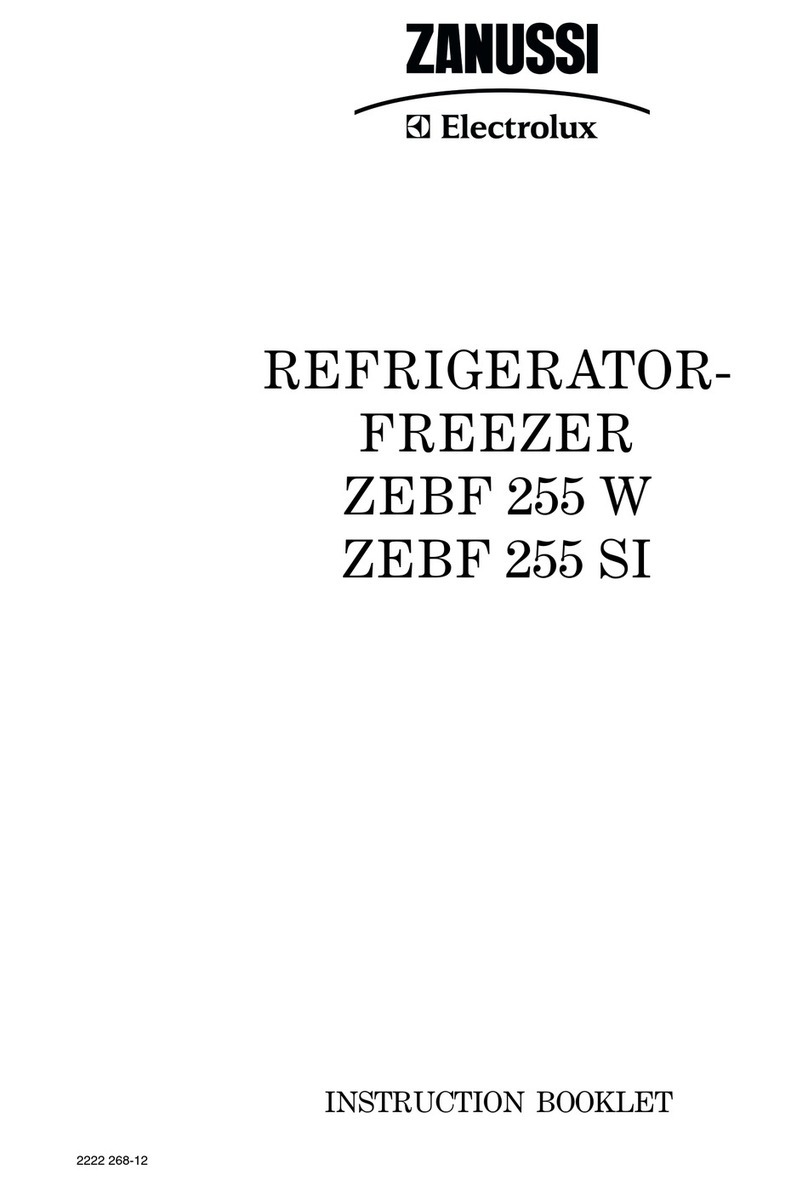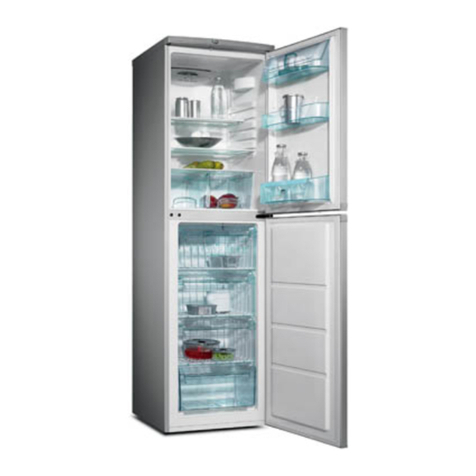IMPORTANT SAFETY INFORMATION
It is most important that this instruction book should be retained with the appliance or uture
re erence. Should the appliance be sold or trans erred to another owner, or should you move house and
leave the appliance, always ensure that the book is le t with the appliance in order that the new owner
can get to know the unctioning o the appliance and the relevant sa ety in ormation.
This in ormation has been provided in the interest o sa ety.You MUST read it care ully be ore installing
or using the appliance.
Installation
• This appliance is heavy. Care should be taken
hen moving it.
• It is dangerous to alter the specifications or
attempt to modify this product in any ay.
• Care must be taken to ensure that the appliance
does not stand on the electrical supply cable.
Important: if the supply cable is damaged, it
must be replaced by a special cable available
from your local Service Force Centre.
• Any electrical ork required to install this
appliance should be carried out by a qualified
electrician or competent person.
• Parts hich heat up should not be exposed.
Whenever possible, the back of the appliance
should be close to a all but leaving the required
distance for ventilation as stated in the installation
instructions.
• The appliance should be left for 2 hours after
installation before it is turned on, in order to allo
the refrigerant to settle.
Child Sa ety
• Do not allo children to tamper ith the controls
or play ith the product.
• Keep all packaging ell a ay from children.
General Sa ety
• This appliance contains hydrocarbons in its
cooling unit; maintenance and recharging
must there ore only be carried out by
authorized technicians.
• Take utmost care when handling your
appliance so as not to cause any damages to
the cooling unit with consequent possible
luid leakages.
•The appliance must not be located close to
cookers, radiators or boilers.
•Avoid prolonged exposure o the appliance to
direct sunlight.
•Do not use other electrical appliances (such
as ice cream makers) inside o re rigerating
appliances.
During Use
• This appliance is designed for domestic use only,
specifically for the storage of edible foodstuffs.
• Frozen food must NOT be re-frozen once it has
tha ed out.
• Do not place carbonated or fizzy drinks in the
freezer.
• Do not remove items from the freezer if your
hands are damp/ et, as this could cause skin
abrasions or frost/freezer burns.
• Ice lollies can cause ‘frost/freezer burns’ if
consumed straight from the freezer.
• Manufacturers’ storage recommendations should
be strictly adhered to. Refer to relevant
instructions.
• The cooling plate or refrigerated freezer shelves
in this appliance contain channels through hich
the refrigerant passes. If these are punctured this
ill cause substantial damage to the appliance
and result in food loss. DO NOT USE SHARP
INSTRUMENTS to scrape off frost or ice. Under
NO circumstances should solid ice be forced off
the lining or shelves. Solid ice should be allo ed
to tha , hen defrosting the appliance. See
Defrost Instructions.
Maintenance and Cleaning
• S itch off and unplug the appliance before
carrying out any cleaning or maintenance ork.
Servicing
• This product should be serviced by an authorised
engineer and only genuine spare parts should be
used.
• Under no circumstances should you attempt to
repair the machine yourself. Repairs carried out
by inexperienced persons may cause injury or
serious malfunctioning. Refer to your local
Service Force Centre and al ays insist on
genuine spare parts.
At the end o the Appliance
Li e
• When disposing of your appliance, use an
authorised disposal site.
• Remove the plug and ensure that any locks or
catches are removed, to prevent young children
being trapped inside.
2



















































